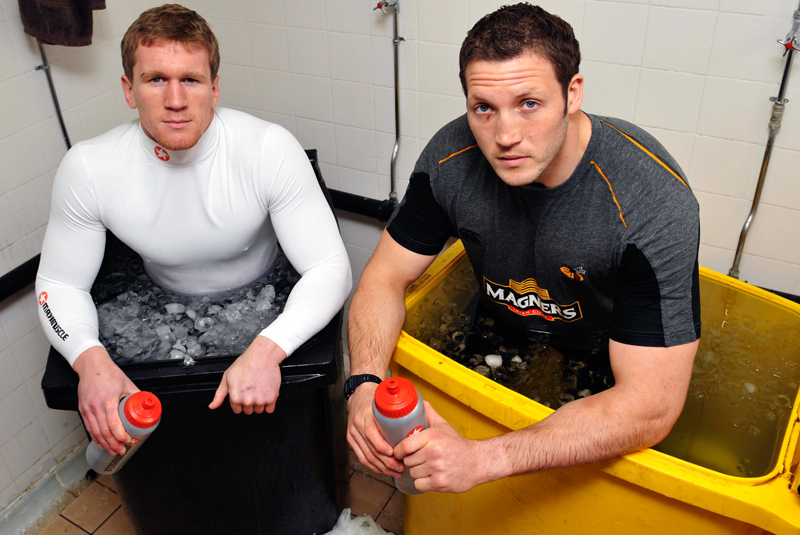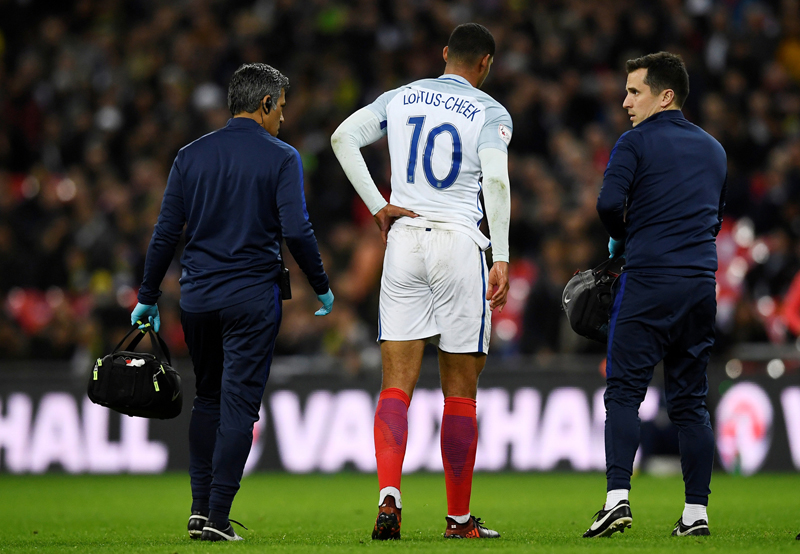Cold water immersion for recovery: hype, or the real deal?

At high levels of sport, athletes must often train multiple times a day for consecutive days in order to be competitive. These training demands can make it very difficult for athletes to recover optimally. This is far from ideal when it comes to performance because fast and full recovery is necessary for an athlete to start the next training session refreshed and physiologically ready to train again.
Recovery options
Following a training session or race, an athlete’s speed of recovery will depend on a variety of factors. These include:
- How hard/long the bout of exercise was.
- The athlete’s nutrition immediately after and in the hours following the exercise bout.
- The amount of physical rest/activity taken by the athlete.
- Each athlete’s individual characteristics – eg age (older athletes need more time to recover), previous training history (well-trained muscles can recover faster) and genetic makeup.
Of these factors, the most easily modifiable are post-exercise nutrition and rest activity. Therefore, it makes sense for athletes to get these right after every training session by taking ample rest (if possible) and ensuring that their post-exercise nutrition is optimized with ample carbohydrate and protein intake (see this article for an in-depth explanation of what is required nutritionally).
However, while ensuring ample rest and optimum nutrition are incredibly powerful tools for ensuring rapid and full recovery, they are by no means the only tools in the box. It turns out that there are a number of other post-exercise therapeutic strategies that can enhance and speed up recovery. These include massage and foam rolling, stretching, and small amounts of low-intensity targeted exercise, more commonly known as ‘active recovery’.
Another set of options – which have become increasing popular – are those that encourage physiological changes in the muscles with the use of temperature manipulation (either low, high or contrast temperatures). The most popular methods are ‘cold water immersion’ (CWI for short), warm water immersion, contrast water therapy (alternating warm and cold temperatures), and very cold air therapy (often dubbed cryotherapy). Of these methods, CWI is probably the most popular and best researched.
What is CWI?
The use of CWI involves the athlete immersing themselves for a period of time in cold water (typically around 10-13C [50-55F]) right after training or competition. The theory behind it is that CWI after exercise decreases the body’s core temperature – not just back to its normal baseline level but to below its baseline level, with a peak drop in core temperature occurring around an hour following immersion. This cooling effect has been shown to help repair exercise-induced muscle damage, with a larger effect for weight-bearing (running and strength training) compared with non-weight-bearing activities(1,2).
Evidence for CWI
Scientists believe that the enhanced repair effect is likely to be related to CWI-induced muscle cooling and direct hydrostatic pressure – ie the pressure of water acting directly on the muscles(3). In terms of what this means for athletes, the key benefits of CWI are reductions in delayed onset muscle soreness, edema, and exercise-induced strength loss. In addition, subjective measures of fatigue and recovery are typically improved in the hours and days following CWI(4). Another benefit of CWI arises from its ability to reduce core temperature; a drop in core temperature before retiring to bed enhances certain thermoregulatory behaviours, like nest building and curling up, holding a hot-water bottle etc, and these behaviours are now known aid sleep onset and quality(5). Given the importance of sleep in recovery, this could be another bonus if CWI is performed close to bedtime.
How does CWI stack up against other recovery therapies?
Compared to other non-temperature therapeutics such as foam rolling, stretching, massage etc, the use of CWI for accelerating recovery has demonstrated the highest scientific level of evidence. But how does it compare with other variants using temperature and/or hydrostatic pressure such as contrast therapy, cold-air cryotherapy, warm water therapy etc? After all, if you’re going to take the time and trouble of undergoing some kind of temperature therapy, you want to know that cold water immersion (not quite so pleasant to endure) provides superior results over a much more pleasant alternative such as warm water therapy!
This question is difficult to answer with certainty because many of the studies into these different recovery strategies have compared these different strategies with a control condition (ie just resting passively) – eg CWI vs. passive rest, warm-water immersion vs. passive rest etc. Moreover, in studies that have compared recovery strategies against each other, most have compared just two strategies rather than all of them. In addition, different studies have used different populations, different pre-recovery exercise protocols and even different conditions for the therapy (ie time periods immersed, temperature of the water etc).
New research
To try and answer this, a new study by Australian scientists just published in the journal ‘Sports Medicine’ has taken a closer look at the data(6). This study took the form of a systematic review with a meta-analysis. Put simply, this means a study that draws together the findings from previous high-quality studies on a topic and combines all that data using sophisticated statistical techniques to arrive at an overall conclusion.
The researchers looked to compare the effects of CWI against other common recovery strategies following acute strenuous exercise in athletes and other physically active populations. In particular, they looked at recovery of athletic performance, perceptual outcomes (how the athletes felt), and markers of muscle damage (creatine kinase) in the athletes.
To be included in the meta-analysis, the previous studies had to meet the following criteria:
- Peer reviewed (ie published in a scientific journal)
- Included participants who were involved in sport or deemed very physically active,
- Compared CWI with other recovery modalities following an acute bout of strenuous exercise
- Measured performance outcomes and perceptions of recovery, or if not, measured (reductions in) markers of muscle damage following recovery.
Overall, 28 studies were meta-analysed, and once the data was analyzed, the researchers were able to draw robust conclusions.
The findings
The key findings were clear cut. When it came to recovering from muscle soreness, CWI was superior to all the other recovery methods. For the recovery of muscular power and flexibility following a bout of strenuous exercise, CWI was similar to cryotherapy and more effective than active recovery, contrast water therapy and warm-water immersion. The only area where CWI was surpassed was in the promotion of recovery of muscular strength and the immediate recovery of muscular power within one hour post-exercise; here cold air cryotherapy was significantly more effective than CWI.
Practical implications for athletes
Assuming you are attending to your nutritional needs and getting enough rest, the use of CWI is definitely worth considering over and above most other recovery strategies when you need to recover fast – for example when performing a multi-stage competition over several consecutive days. The good news is that it’s very easy to do; simply run a bath with cold water (10-13C) and sit in it for 10-15 minutes! In this study, it also seemed that the precise duration of immersion didn’t seem to affect the overall (improved) outcome, making it a very flexible and easy-to-use option.
One caveat however concerns the regular and habitual use of CWI for recovery after training sessions. If you’re training for maximum muscle growth, power and strength, religious use of CWI after every session might not be recommended. That’s because some research shows that by quelling inflammation and muscle damage, cold therapies after exercise might also interfere with the muscle growth adaptation process, potentially blunting the gains produced by a workout(7.8). By contrast, endurance adaptations following CWI do not seem to be affected in the same way(9). In fact, research suggests that CWI actually increases a key signalling molecule known as PGC-1α, which is an established molecular marker in the activation of mitochondrial biogenesis(10). In short, PGC-1α activates genes involved in manufacturing mitochondria – the cells’ ‘energy factories’ – which means they have more capacity to process oxygen and hence (in muscles) have improved endurance capacity. This means that cooling muscles following training might actually improve endurance adaptations. So if you’re an endurance athlete looking for fast recovery – go for it!
References
- Sports Med. 2016 Aug; 46(8):1095-109
- Int J Sports Physiol Perform. 2011 Jun; 6(2):147-59
- Br J Sports Med. 2012 Mar; 46(4):233-40
- Int J Sports Physiol Perform. 2008 Sep; 3(3):331-46
- Front Neurosci. 2019 Apr 24;13:336
- Sports Med. 2022 Dec 17. doi: 10.1007/s40279-022-01800-1. Online ahead of print
- Eur J Appl Physiol (2006) 96: 572–580
- Journal of Physiology 2015. 50 593(18)
- Rep. 2019; 9:12013
- Physiol. 2018; 9:171
You need to be logged in to continue reading.
Please register for limited access or take a 30-day risk-free trial of Sports Performance Bulletin to experience the full benefits of a subscription. TAKE A RISK-FREE TRIAL
TAKE A RISK-FREE TRIAL
Newsletter Sign Up
Testimonials
Dr. Alexandra Fandetti-Robin, Back & Body Chiropractic
Elspeth Cowell MSCh DpodM SRCh HCPC reg
William Hunter, Nuffield Health
Newsletter Sign Up
Coaches Testimonials
Dr. Alexandra Fandetti-Robin, Back & Body Chiropractic
Elspeth Cowell MSCh DpodM SRCh HCPC reg
William Hunter, Nuffield Health
Keep up with latest sports science research and apply it to maximize performance
Today you have the chance to join a group of athletes, and sports coaches/trainers who all have something special in common...
They use the latest research to improve performance for themselves and their clients - both athletes and sports teams - with help from global specialists in the fields of sports science, sports medicine and sports psychology.
They do this by reading Sports Performance Bulletin, an easy-to-digest but serious-minded journal dedicated to high performance sports. SPB offers a wealth of information and insight into the latest research, in an easily-accessible and understood format, along with a wealth of practical recommendations.
*includes 3 coaching manuals
Get Inspired
All the latest techniques and approaches
Sports Performance Bulletin helps dedicated endurance athletes improve their performance. Sense-checking the latest sports science research, and sourcing evidence and case studies to support findings, Sports Performance Bulletin turns proven insights into easily digestible practical advice. Supporting athletes, coaches and professionals who wish to ensure their guidance and programmes are kept right up to date and based on credible science.









